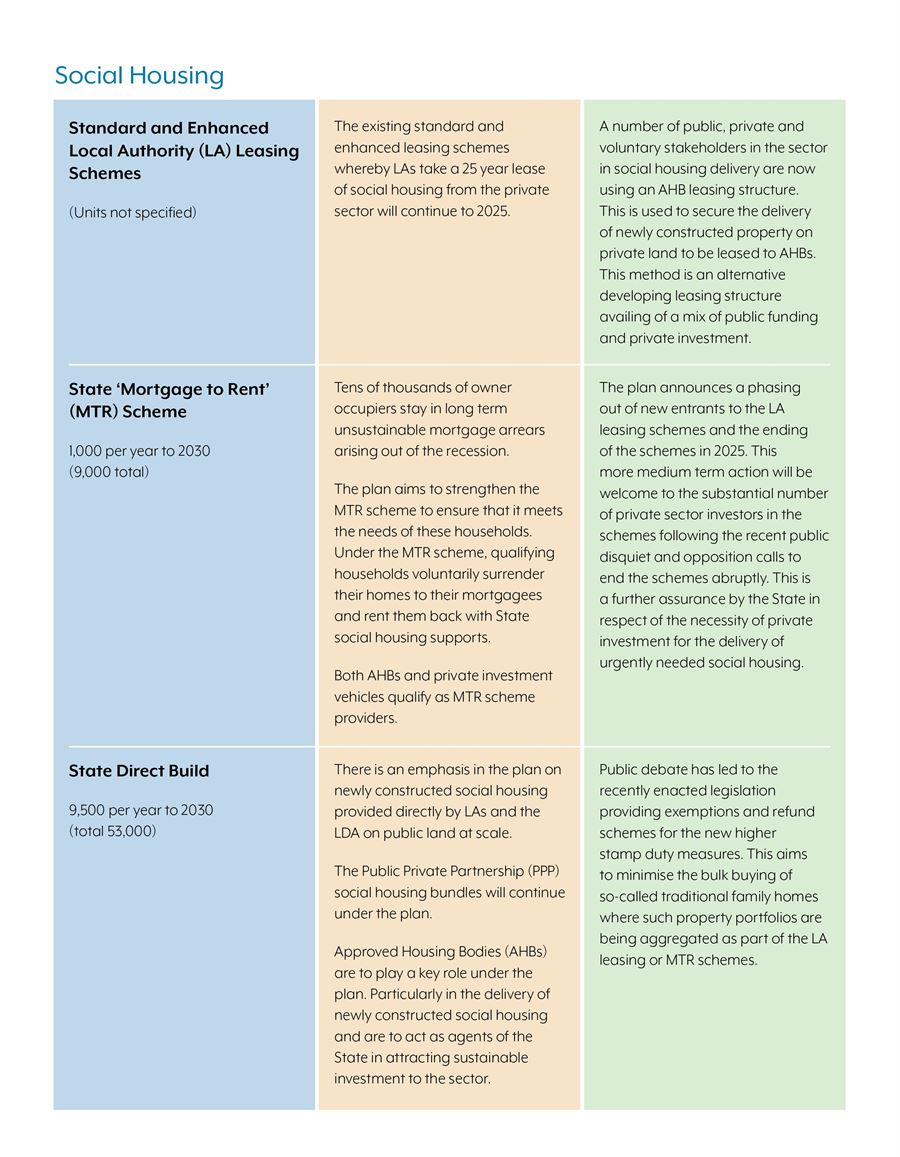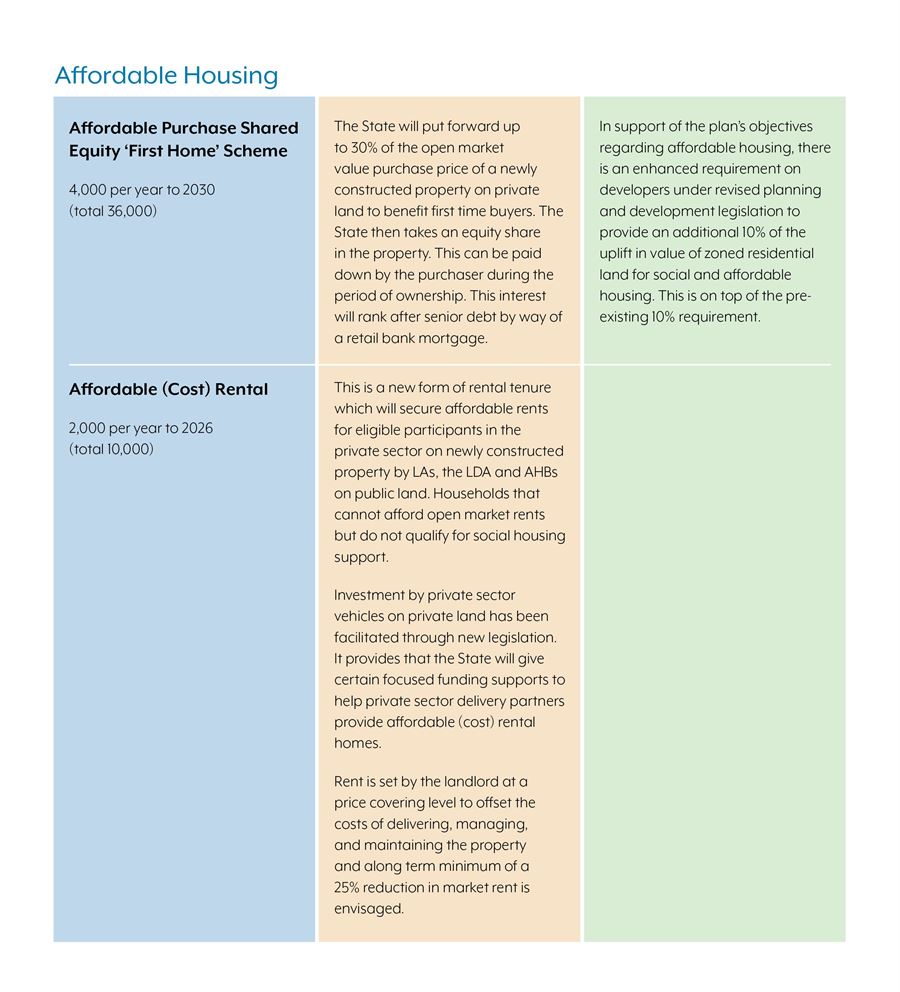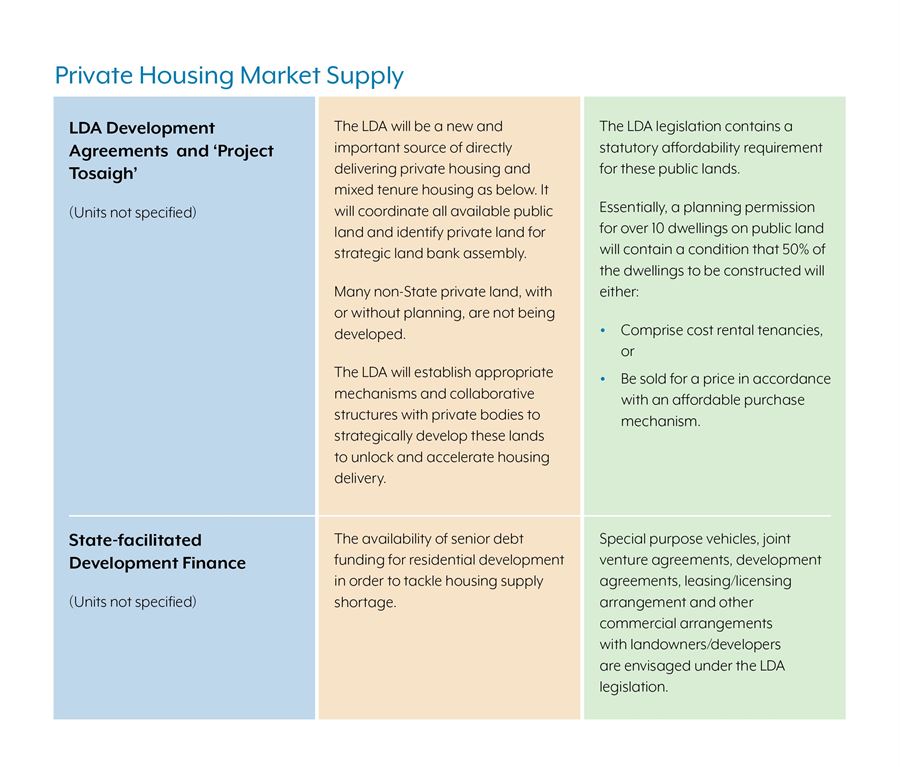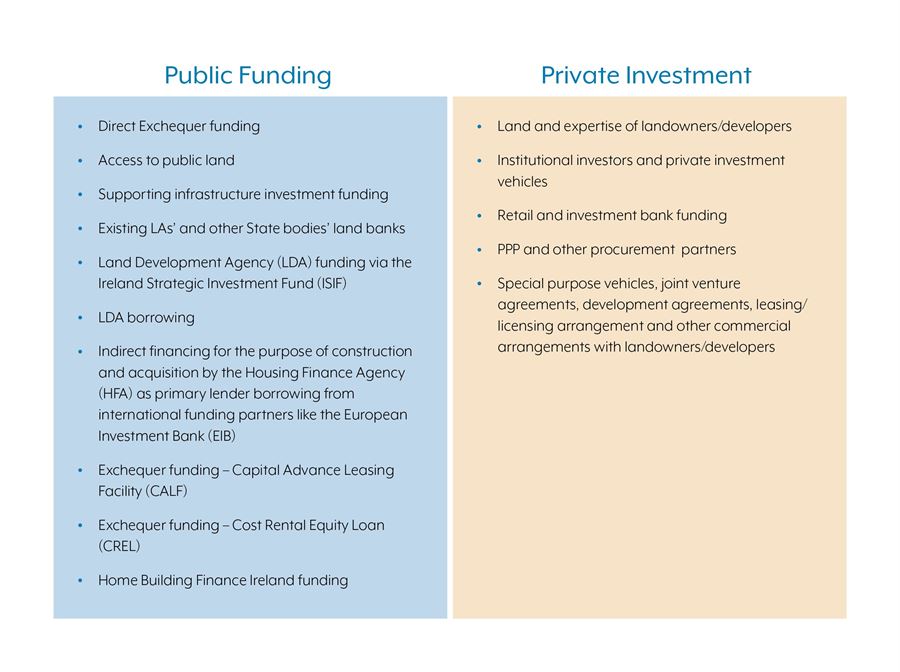.jpg)
The recently announced ‘Housing for All’ plan is the largest ever housing budget in the history of the State.
The ultimate goal of the plan is to secure the delivery of large scale sustainable mixed tenure communities comprising a balanced blend of private, social and affordable housing. Annual average public investment in excess of €4bn is envisaged under the plan and is designed to achieve the delivery of over 300,000 new homes by 2030
A mix of public funding and private investment will be required to achieve the plan’s objectives and this is clear from the plan which states that “Non-State sources of funding will be crucial to the long term success of ‘Housing for All’. International capital markets and private investment, both domestic and international, will play a key role.”
Although there is a significant focus in the plan on direct public funding for the accelerated delivery of housing, there is also a clear and continued role for private sector partners to achieve the plan’s objectives in capitalising the various actions. This is likely to include landowners, developers and also indigenous and foreign lenders and investors.
How will the State achieve this ambitious plan? How will it fund the over 200 specific actions arising out of the plans various objectives and pathways?
Interestingly, the plan expressly references institutional investment in the residential sector as a means of reducing reliance on public funding for development in the context of building broader capital markets for housing development.
The plan commits to an increasing recognition of the importance attributed by investors to achieving positive environmental and social impacts on a sustainable basis. The plan also notes that housing is well placed to attract sustainable and ethical financing from investors with such standards.
The below tables illustrate the corresponding private sector opportunities to public funding for various delivery mechanisms across housing tenures. It also provides some commentary on recent public and private sector collaboration in this space.




Conclusion
Aside from an emphasis in the plan on returning to some more traditional direct Exchequer funded delivery mechanisms, the plan acknowledges that external sources of finance will be needed to bridge the gap from public funding. The State will continue to reach out to the private sector to secure the delivery of over 300,000 new homes across the private, social and affordable housing tenures by 2030.
The plan references the “unprecedented mobilisation and a coordinated effort across all forms of financing”.
The Department of Finance and the National Treasury Management Agency will assess funding adequacy and what is required to complement public funding. They will also consider financing options regularly during the course of the plan, and will lead communication and engagement with institutional investors to communicate policies and opportunities on that front.
For more information, contact a member of our Real Estate team.
The content of this article is provided for information purposes only and does not constitute legal or other advice.





